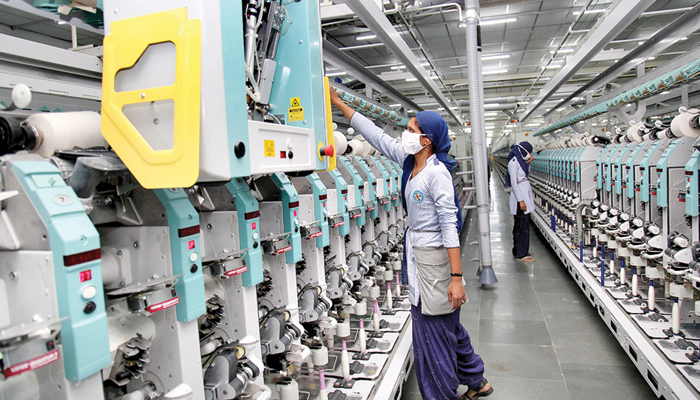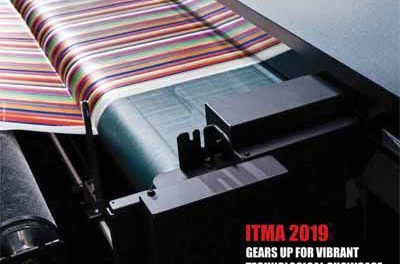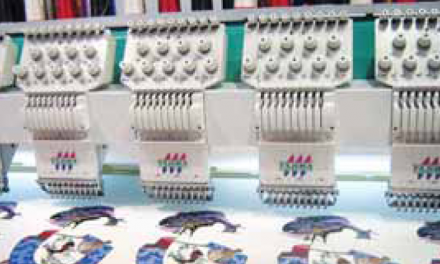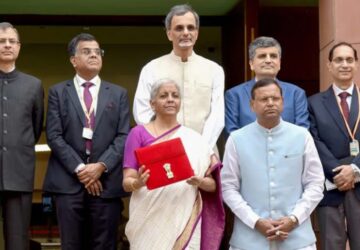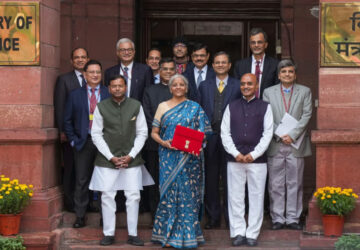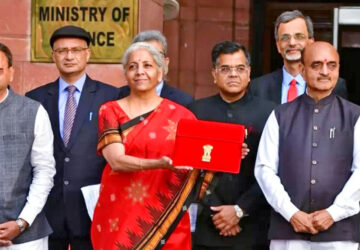When the first mega Trans Pacific Partnership (TPP) Agreement was concluded in Novembe 2015, there were apprehensions about the impact itwould have an India’s textile and clothing (T and C)exports to the US. These apprehensions have now been put to rest, with the newly-elected US PresidentDonald Trump deciding to withdraw from TPP, bringingcheer to the T and C sector. Trump’s move wouldimmensely benefit the garment segment, which hasa big State in North America, including Canada. TheUS was the prime mover of the agreement, whichhas now lost all its importance.
The TPP pact was to come into force in mid-2016 and to include a dozen participating countries. With the agreement not to be ratified by the US, Vietnam and Malaysia, two major textile exporting countries and are members of TPP, may not pose a serious threat toour T&C industry. Other members are textile importing countries. These are besides the US and Canada, Mexico, Chile, Peru, Japan, Australia, New Zealand, Singapore and Brunei.
India is not a member of TPP. The big attraction provided by TPP is the zero duty concession. Vietnam our major competitor would have impacted India’s garment exports to the US had the TPP became areality. It already has a large presence in the USmarket. But it is negotiating a free trade agreement (FTA) with Washington to be finalised by 2018. If the proposed FTA comes into force Vietnam will be aformidable competitor not only for India but also for countries like Bangladesh and other least developed countries which have been growing on the combination of duty free access for themselves and high duties on larger producing countries like China and India. Malaysia in not a major player now in the US market, but the Zero duty access under TPP would also have pushed up its exports.
China’s export competitiveness in the global market has been waning for quite same time. Naturally, there will be a scramble mostly among the Asian countries to grab the share that China will increasingly vacat in the US and European Union markets. Canada also is a market for garments where several Asian countries are competing and TPP could have assisted Vietnam & Malaysia to increase their market share. The size of Canadian import is not large enough to warrant any alarm.
But the position in the US is different where import duties for apparel products range up to 32 per cent. The highest one for apparel in any major market, including India for our exports, the average duty incidence is around 16 per cent, as the highest duties are for man-made fibre-based knitwear where our pressure is negligible.
The 16 per cent is crucial as it is more than the profit our apparel exporters earn at present and is the price advantage that TPP would have provided Vietnam and Malaysia import a lot of yarn and fabrics from non-TPP members. The TPP members do not have the capability to become alternative suppliers of such large quantities. But Vietnam has been able to negotiate for exemption from this rule during TPP negotiations.

It is also necessary to take into account the impact of some other trade agreements which are in the offing. The most important among them is the Regional Comprehensive Economic Partnership (RECP) which includes: 16 Countries including India, China, Japan, South Korea, Australia, New Zealand and the 10 Asian members. This is an agreement in which India has offensive interest. Since most of the participants are major importers of textile products and India’s imports from them are mostly of raw material and intermediate products, largely for export production. However, India needs to be careful about indirect imports from China. For this, it is important to ensure the two step formula in the Rules of Origin and restrict cumulation to bilateral level to Vietnam in the US market, where it is suffering the same level of duty.
If the proposed FTA comes into force Vietnam will be a formidable competitor not only for India but also for countries like Bangladesh and other least developed countries which have been growing on the combination of duty free access for themselves and high duties on larger producing countries like China and India.
Malaysia’s exports to the US are also on the rise worth half billion. Its growth rate is nearly 3 per cent and zero duty access under TPP would have led to higher export growth rate. It is to be noted that tariff concession is not the only important factor that drives up competitiveness. For example, Vietnam does not enjoy any tariff concession from the US at present. Its apparel exports, however, are three times those of India. Bangladesh, too, has significantly larger exports and higher growth rate than India, without any tariff concession.
Mexico, on the other hand, used to get zero duty as well as quota free access in the US Market on implementation of the North American Free Trade Agreement (NAFTA). It was also the largest supplier of apparel. Now Mexico has posted a negative growth of 4 per cent compared to 2015. China, India, Vietnam and Bangladesh have been able to overtake Mexico over the past few years while suffering full import duly on their goods. The quota free regime was terminated in December 2004.
US had stopped investing in Mexico for some time and this has led to a drastic reduction in production and exports of garments to America, Canada another member of NAFTA, does not export but import textile products. TPP stipulates rules of origin a point to be noted before drawing a conclusion on the impact of the agreement. For textiles the product specific rules mandate the ‘yarn forward’ rule that the US has been enforcing in all its agreements that allow duty free access for textiles and clothing. This rule, in effect, means that for textiles and apparel products to be eligible for zero duty access, products from yarn onwardshould have been manufactured in the exporting country or any other TPP member – countries.
India is not a member of TPP nor has at any plans to join TPP. But it does not need a waiver of the ‘yarn forward’ rule should New Delhi decides to join. This is because we have integrated textile mills for production of yarn fabrics made ups to garments the ultimate product.


